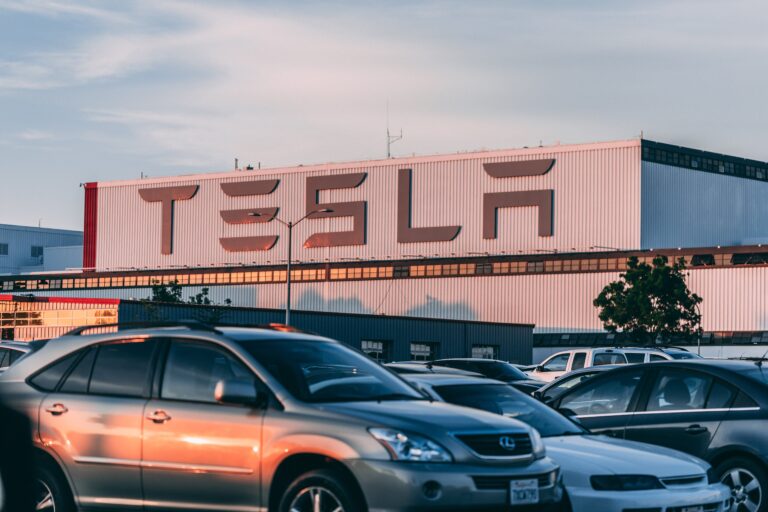U.S. EV charging station network begins to take shape

Plus, World Bank’s call to slash fossil fuel subsidies
Eyeing an EV? This may make it easier.
For the past few days, I have been busy looking to book tickets for my family and I to go to California around the Christmas holidays. It’s a little complicated because my wife and I are flying out first — with the kids a week later — and then we are all returning together. (By the way, boss, did I tell you about this?)
A tool I find particularly helpful in researching the possibilities — and navigating the typically high holiday season fares — is Google GOOGL 0.34%↑ Flights, which offers all sorts of rankings and other gizmos. I don’t usually book there because of various frequent-flyer bonuses, such as upgrades available on airline websites, but it’s very good in pointing me in the right direction.
The flight tool, which includes information about emissions, is now being followed by a comparison site for electric vehicles and other tools to measure sustainability.
There is, for example, an expansion of a Google Maps feature that suggests fuel-efficient routes that have fewer hills, less traffic and constant speeds. The company says that since launching in 2021 it has helped prevent more than 2.4 million metric tons of CO2-equivalent emissions — the equivalent of taking approximately 500,000 fuel-based cars off the road for a year.
And then there’s something that looks beyond fossil-fueled cars — a search function that helps determine which EV might be best for you. For instance, when people search for terms like “best electric cars,” they can compare prices, battery range and discover brands and models. They can also find federal government incentives for qualifying vehicles in the U.S., with German and French incentives coming soon.
Meanwhile, drivers can also customize a route to see how many charges are needed along the way based on factors like elevation change and speed limits. This feature rolls out in the U.S. in the coming weeks and in Europe early next year.
Hey, if my 19-year-old Honda HMC -0.73%↓ ever gives up the ghost, the new gizmo could be in my bookmarks.
Ajay is more than OK (says my wife)
From 2000 to 2015, my wife toiled as an executive at Citigroup C 0.42%↑. For part of that time, she worked for a department that spearheaded Citi’s strategy in microfinancing in the developing world; in other words, small loans to local businesspeople and farmers. It was important and impactful work.
The boss of that department was an India-born man called Ajay Banga. He impressed my wife with his fierce focus and commitment to doing the right thing. But he didn’t remain long — he then went on to head up the bank’s Asia-Pacific business before in 2010 becoming president and CEO of Mastercard MA -1.33%↓, where he stayed for a decade and tripled revenues, increased net income sixfold and grew market capitalization from under $30 billion to more than $300 billion, according to the Financial Times. He also launched Mastercard’s pledge to plant 100 million trees.
As my wife had predicted, a man who would go far in business while also being committed to making a positive contribution.
Then came a couple of years of transition, including being chairman of the International Chamber of Commerce and continuing his involvement with the Priceless Planet Coalition, a group of about 100 firms that make corporate investments to preserve the environment.
And now, since February of this year, he is president of the World Bank, where his expertise as well as concern for people and the environment is once again coming to the forefront. The latest example of this is his call last week to reduce the $1.25 trillion spent by the world’s governments on subsidies for agriculture, fuel and fisheries, which, it is estimated to result in about $5 trillion in environmental impact, particularly climate change.
Being an economic realist, Banga told the annual meeting of the International Monetary Fund and the World Bank that he was “not saying to get rid of all of those,” reports Reuters. “I consider some of those subsidies mission-critical to the social contract with the government and its citizens. But I don’t believe that $1.25 trillion qualifies.”
If my wife’s experience is any guide, some of those subsidies may soon be history.
Solar is getting bigger in more than a single way
One morning this summer, we looked out of the front window of our house in Connecticut and got somewhat of a surprise: Men were crawling all over our neighbor’s roof.
At first, we thought they were perhaps getting new tiling. Or the chimney needed some attention. But then the workers started creating a grid that eventually held a considerable number of solar panels.
And the grid was large, covering almost the whole of the front of the house. In addition, we saw the men carrying a Tesla TSLA -5.21%↓ battery into the home’s garage, presumably to store some of the power created by the panels.
With considerable incentives available — and the ability to sell roof solar to the local power company — more and more houses in the neighborhood are doing what the family opposite has done. But no longer are the rooftop arrays a sparse collection of silicon sun collectors; instead, they are tending to cover most of a house’s lid.
And it’s not just in Connecticut. Figures just out from the Lawrence Berkeley National Laboratory (LBNL) show that the median size of home solar systems last year reached 7.2 KWs, rising from 2.4 KWs in 2000. Another trend: In 2022, about 10% of residential installations included storage, up from almost nothing in 2015. Meanwhile, storage is increasingly being added to existing solar arrays, with 23% of systems having battery backup by the end of 2022.
In addition to incentives, another factor in the increasing number of installations is the falling price of solar panels, which LBNL says have fallen “by roughly $0.4/W per year, on average.”
Come the spring, we expect to see more rooftop activity in the nabe.
(A native of England, veteran journalist Matthew Diebel has worked at NBC News, Time, USA Today and News Corp., among other organizations. Having spent much of his childhood next to one of the world’s fastest bodies of water, he is particularly interested in tidal energy.)
More from ClimateCrisis 247
- Wind And Solar Face Real Damage Under Trump Laws
- Europe Tesla Sales Plunge 40%
- There Are No Cheap Used EVs
- EV Sales Skyrocket, According To Study






